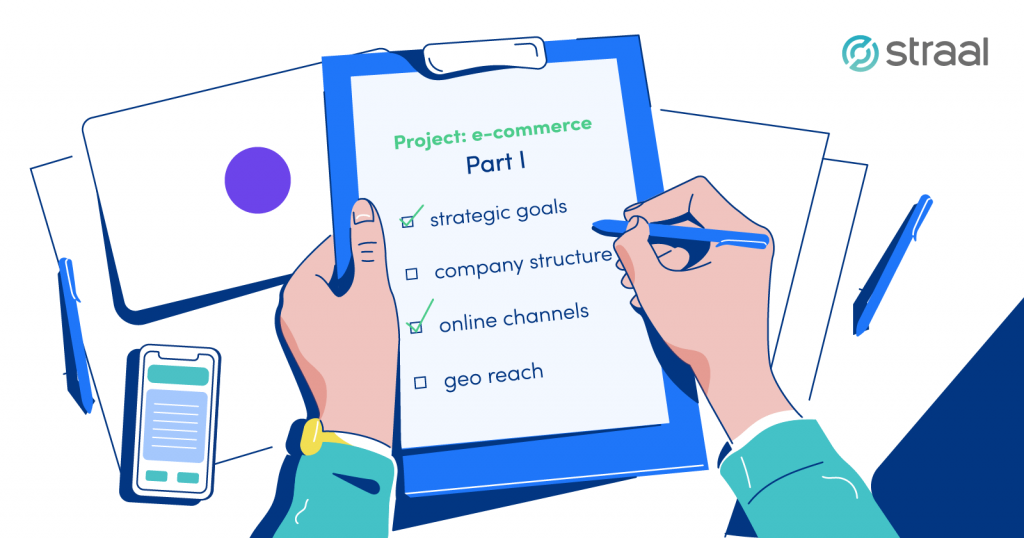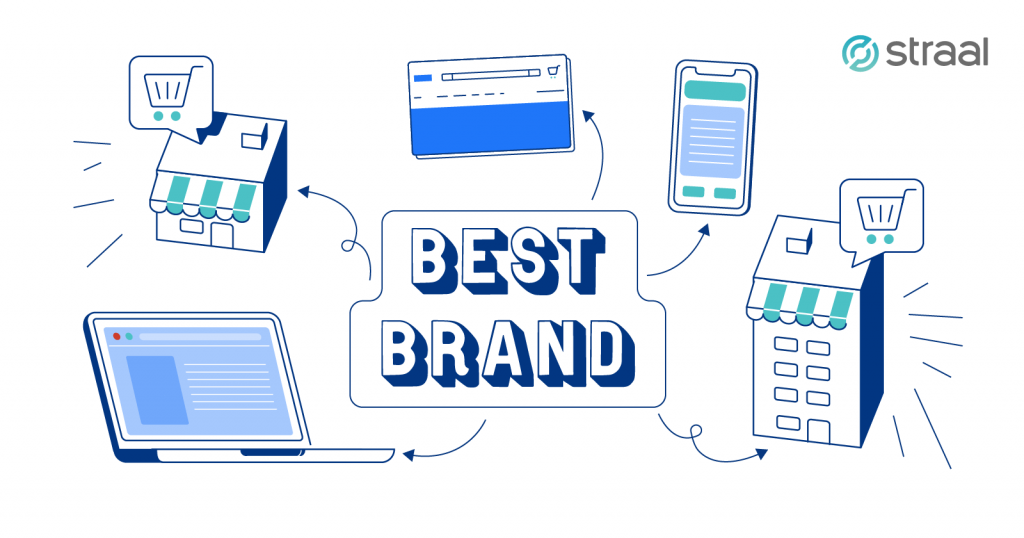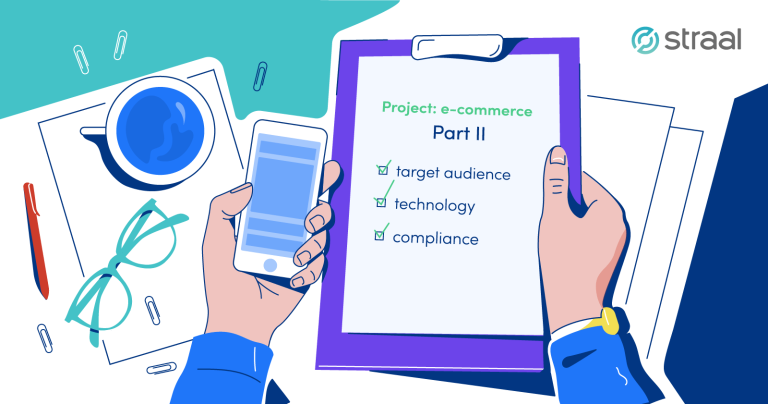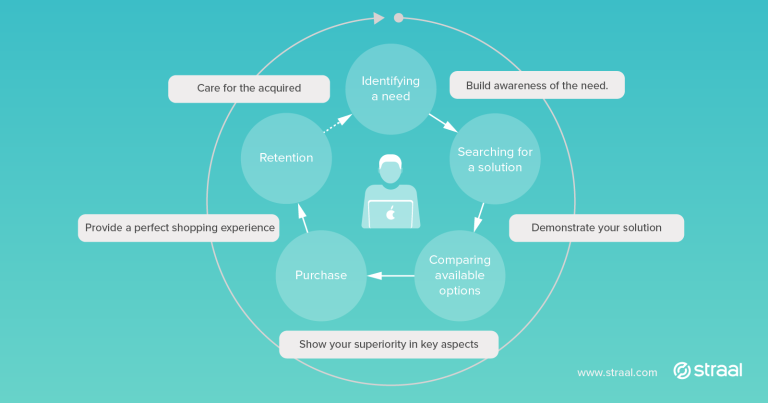Expanding to the digital realm and developing online sales has become a common trend among retailers these days. Regardless of their size, companies want to benefit from the rising consumer interest in online shopping. Big players apply advanced ecommerce management strategies that increase their chances for e-success, but smaller entities tend to neglect the strategic part and follow their intuition instead. In this entry, I explain why the latter approach is not right and what strategic issues one should mind in the context of ecommerce management.

The Importance of Ecommerce Management
The ongoing growth of ecommerce tempts many owners of traditional, offline retail businesses to launch an online sales channel. Large organizations typically create new departments devoted exclusively to ecommerce or hire online sales executives for this purpose. They plan the whole process of entering the online market, involving their strategic units.
Smaller companies, even the mid-sized ones, either can’t afford to develop their structures or don’t see value in doing so. They often don’t find hiring additional staff necessary and think their employees’ competencies are sufficient. All in all, online sales is still sales.
That’s where they make a mistake. They treat entering the online market like opening another physical store.
Ecommerce has its own laws. Online shoppers don’t necessarily share buying habits with physical stores’ visitors. The promotional techniques marketers use offline may not be effective online. Also, the number of customers one can reach offline is not the same as a potential online customer base.
For a brick-and-mortar company, opening an e-store (no matter if it’s their own website, an app or a marketplace) is like having a long-distance run for a sprinter: the essence remains the same because it’s still running, but essential technicalities differ. Runners don’t train for long-distance competitions in the same way as they do for sprinting events. Similarly, you shouldn’t manage your online sales channel in the same way as your physical chain.
To sell online effectively, every company (not only the large ones) should have proper ecommerce management. If you acknowledge that ecommerce requires a different approach in certain aspects, you won’t waste time on ineffective actions, and you’ll benefit from the possibilities that online sales provide. It all starts at the conceptual level, i.e. from the strategy. Below, you’ll find the list of strategic ecommerce issues to take into account when preparing for entering the online market. They’re especially important for mid-sized entrepreneurs who already have certain organizational structures but don’t devote that much time to strategic planning as large organizations do.
Ecommerce Management Issues #1: Placing Online Sales in Overall Strategy
Before launching an online channel, think about its role in the overall sales strategy. Is it meant to become your primary source of revenue or just some kind of sales support? Do you want to have the same offering online or to extend it by adding more product variations or lines? Are you going to direct your online shoppers to your physical stores or vice versa?
The principal question to ask yourself is: what is your goal of opening an online sales channel?
Once you place it within a wider strategy, your ecommerce management will become more structured, which is bound to lead to better results. You’ll also be able to implement an omnichannel approach.
Ecommerce Management Issues #2: Having Dedicated Online Sales Teams
As I mentioned at the beginning, large organizations launching online sales typically create separate ecommerce departments within their structures (they collaborate with physical stores management but have their own obligations, too). Industry success stories prove that it’s a good approach. Whether it’ll be possible for you depends, surely, on your company size.

If you can’t afford to create a separate structure, consider hiring ecommerce specialists. It’s tempting to think that your current staff will take care of the new channel, but remember:
ecommerce competencies are different from the commercial ones.
Running an e-store brings about additional challenges (but also opportunities!) that should be addressed with the expertise of your employees. For instance, online sales enable you to track the behaviour of your customers and measure their actions in an affordable manner. In offline sales, such tracking technologies also exist, but they’re extremely costly. This far lower cost is a huge advantage of online sales, but you’ll benefit from it only once you have a specialist with proper analytical skills. Similarly, user experience is a game-changer on the online market, and appropriate design may increase your profits highly, but only if you have a competent UX designer on board. These are just two examples of ecommerce competences, but there are many more.
Also, if you create an ecommerce management department or a smaller structure, expect obligations crossing between teams. Functions such as logistics, marketing, etc. support both online and offline sales. If that’s the case, it’s crucial to provide proper collaboration and communication between departments to align and streamline joint processes.
Ecommerce Management Issue #3: Entering Global vs. Local e-Market
Another substantial advantage of ecommerce is that it’s not limited locally like physical stores. With a proper marketing strategy and offering localization, reaching customers from other neighbourhoods, cities, or even continents is perfectly possible.
Many companies start locally and expand internationally once they see that their online sales generate substantial profit. Doing likewise seems to be the safest option, but you may also apply other strategies (which takes us back to issue #1: defining your goal of launching online sales). Opening an online channel may be a great way of reaching foreign customers for whom your physical stores are unavailable.
Ecommerce gives you access to all consumers regardless of their location. It’s up to you who you’ll target.
If you decide to sell internationally, you’ll face additional challenges such as shipping abroad, translating huge amounts of content or providing local payment methods (in this entry, we explain how to choose a payment system for international sales). Nonetheless, once you overcome these obstacles, you’ll get access to a base of potential customers whose size is thousand times bigger than the one of your domestic market.
Ecommerce Management Issues #4: Choosing the Right Platforms
You don’t have to limit your online sales to your own website with an e-store. You may consider developing a mobile app, entering one of the popular marketplaces (e.g. Amazon, eBay) or partnering with resellers to use their platforms. Multiple channels make ecommerce management more complex but may pay off.

Just like in the case of offline and online sales, selling on multiple platforms requires a strategic approach: what role will each of the channels play in the overall ecommerce strategy? Will you position your business in the same way on all of them? Will they target the same consumers?
Differentiate between your ecommerce channels. Develop separate marketing strategies for each of them.
Once you go outside your own ecosystem (physical stores & online shop on your website/app), you’ll find yourself in a diverse marketing realm. In a marketplace, your offering will be presented in the immediate proximity of the products of your competitors. You’ll probably compete with more merchants as such platforms bring many small-sized enterprises. Also, the visibility of your brand will be smaller. Because of all that, each ecommerce platform should follow a different strategy.
Think Strategically: Ecommerce Management Matters
Don’t disregard the role of strategic planning in the process of entering the e-market. If you take into account the ecommerce issues mentioned in this entry, you increase your chances of launching online sales successfully. Remember that the starting point is acknowledging that offline and online sales are two different stories. Got more questions? Don’t hesitate to [email protected]!
Stay tuned as soon you’ll be able to read about other ecommerce management issues!







